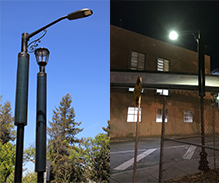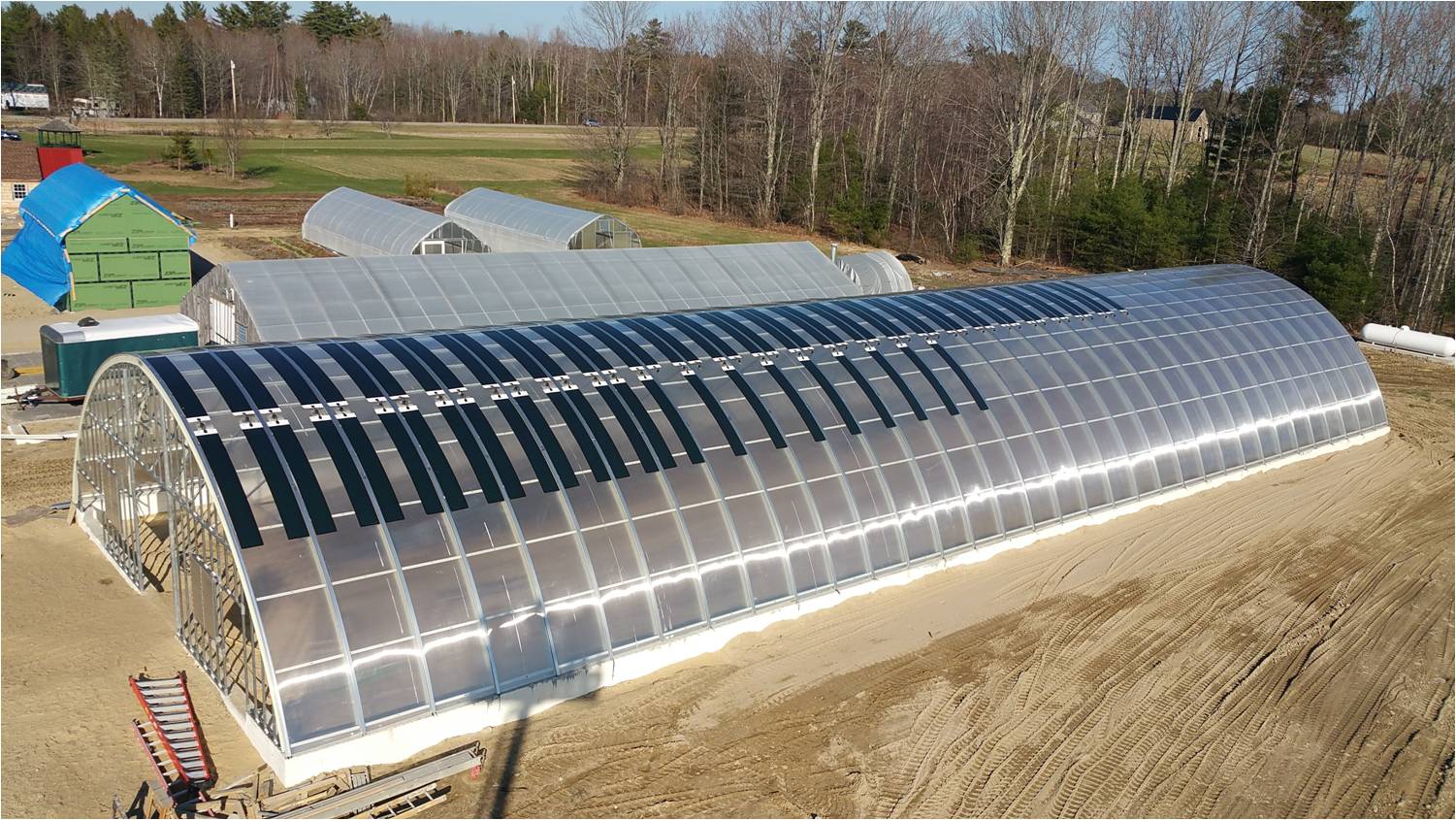Non-roof Solutions
The LeSoleil solar cell is the most powerful thin-film product on the market today. Its flexible, lightweight design makes it ideal for a wide variety of non-roof applications. Following are a few examples:
Landfill Covers
Landfills are located on large, open areas with no commercial or agriculture use or value—perfect for solar installations. Closing and sealing landfills with a synthetic TPO membrane cover reduces costs compared to conventional standard subtitle D methods, and flexible solar modules then can be bonded directly to the membrane cover, providing power generation capability.
Landfill membrane covers and flexible modules are a perfect combination for sloped landfill sites where conventional solar arrays cannot be installed due to slope and live-load limitations. Landfills provide large power-generation area and fewer shading issues when compared to rooftop solar, and adding solar modules to landfill covers is an excellent complement to landfill gas technology to increase overall energy output.
LeSoleil FLEX modules provide the following benefits when used on landfill covers:
– Easy to install—simply peel-and-stick module onto the membrane used to contain, cover and close the landfill
– Non-penetration installation protects the environment
– Flexible—conforms to the contours of the landfill and accommodates differential settlement
– Resistant to theft and vandalism
– Wind- and seismic-resistant
– Shatter-proof—won’t break if struck by debris
Reservoir Covers
Installing solar modules on reservoir covers allows reservoir owners and municipalities to generate power using the water surface area without consuming valuable land area for a solar array. Due to reduced evaporation, a 3-acre storage pond covered with a solar reservoir cover could save over four million gallons of water each year. In addition, solar reservoir covers ensure less water contamination and algae growth, minimizing water treatment costs.
Solar reservoir covers offer a large power-generation area and less shading issues when compared to rooftop solar. The cooling effect of the water also improves solar module performance. And for reservoir-based hydro power plants, solar power provides an ideal supplement to hydro-based power generation.
LeSoleil FLEX modules provide the following benefits when used on reservoir covers:
– Lightweight: less than 2.9 kg/m 2—Ideal for floating structures
– Easy to install—simply peel-and-stick onto reservoir membrane
– Resistant to wind
– Shatter-proof—won’t break if struck by debris
LED Lighting
LeSoleil FLEX panels are the most efficient thin-film lightweight flexible panels on the market today—with an efficiency rating of 16%–generating the most power possible. For lighting applications, this means that the power generated by a LeSoleil panel is sufficient to power an LED streetlight for up to eight days, meaning even in times of inclement weather the light will be powered.
The LeSoleil Flex panels curve around the light pole structure, eliminating the need for a separate rack. Not only does this reduce the chance of vandalism and theft, but it preserves the aesthetic appeal of the light. In addition, the manner in which the FLEX panels lay on top of the cylindrical shape of the pole increases wind resistance. A traditional solar light with rectangular panel can only withstand 70 to 90 mph winds while a light powered by a LeSoleil flexible panel can withstand 150+ mph.
Because solar-powered lighting is self-contained, it is off-grid and can be used in remote installations and is unaffected by power outages.
Customer Challenge
– Provide outdoor lighting that preserves resources, has no moving parts and is virtually maintenance-free
– Panels need to:
– Generate sufficient power
– Easily fit onto existing poles
– Withstand the outdoor environment
LeSoleil Solution
– Flexible panels curve around light pole, preserving the look of the light
– Lights can withstand 150+ mph winds and have low risk of theft and vandalism
– Powerful enough to charge battery to power light for eight days
Greenhouses
Greenhouses are climate controlled environmental structures. With the integration of photovoltaic panels, LED lighting, heating and monitoring systems can be powered off-grid. This allows growers to fulfill green mandates and sustainability goals through carbon reduction and local sourcing. Adding photovoltaic panels to greenhouses also dramatically reduces lifetime building and energy costs.

Location - Multiple
Installation Size - 9W per sf
Customer - ArchSolar
Installation - June 2017

Location - Multiple
Reference: ClearWorldInstallation Size - 240W per light pole
Customer - ClearWorld
Installation - April 2015